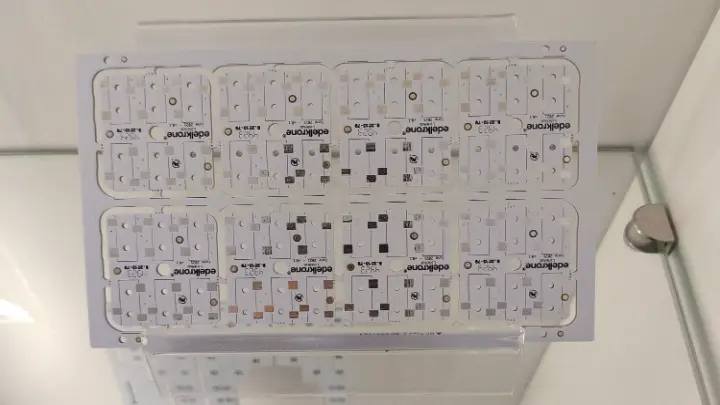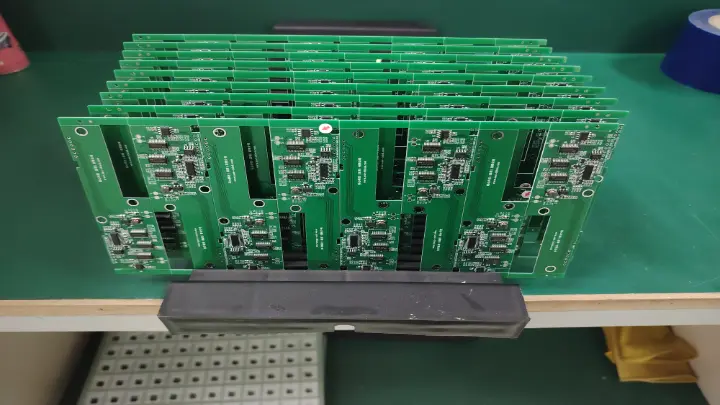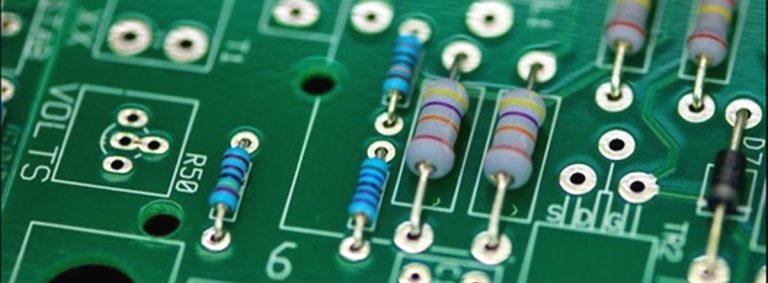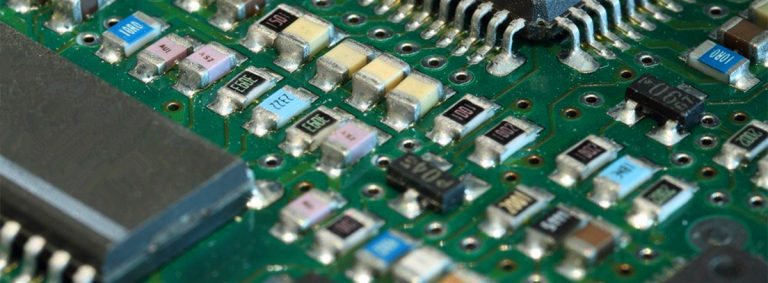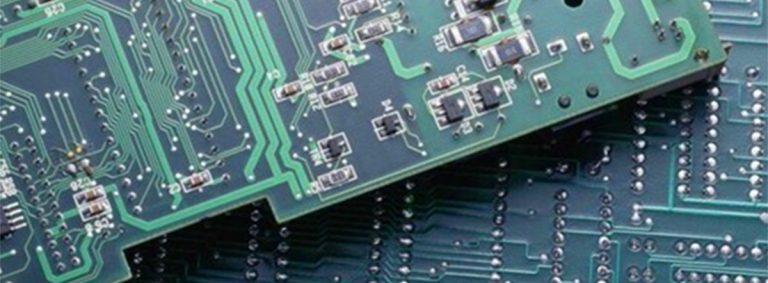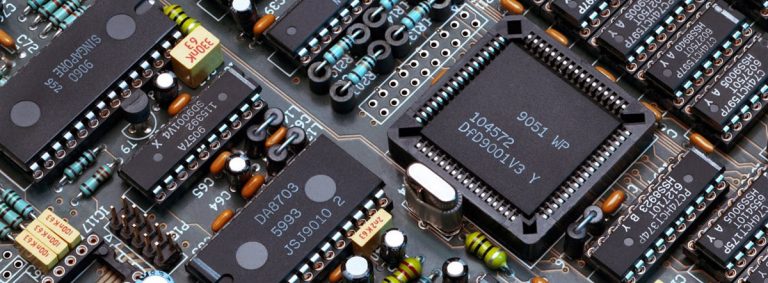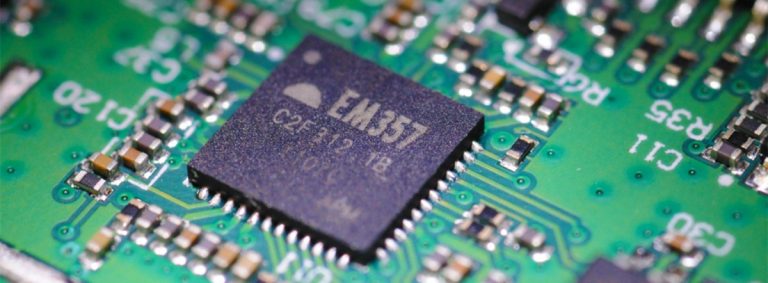Comprehensive Guide to LED PCB Assembly
Introduction
LED PCB assembly is pivotal in modern electronics, enabling innovations across various sectors, including consumer electronics, automotive lighting, and industrial applications. The efficiency and performance of LED PCBs hinge on proper assembly techniques, which ensure effective heat management and longevity of the LED components. This guide delves into the comprehensive aspects of LED PCB assembly, providing insights for engineers, product developers, and businesses seeking reliable PCB solutions.
LED PCB Manufacturing Process
Initial Design and Schematic
Creating an efficient LED PCB starts with a meticulous design and schematic. This initial phase lays the foundation for the entire manufacturing process, ensuring the final product meets performance requirements.
- Software Tools for LED PCB Design: Popular design software includes Altium Designer, Eagle PCB, and KiCAD. These tools offer advanced features for precise circuit layout and component placement, ensuring design integrity.
- Common Design Mistakes: Designers often encounter issues like improper trace width, inadequate spacing, and poor thermal management. These mistakes can compromise the PCB’s performance and reliability.
- Best Practices for Efficient Design: Utilize ground planes to reduce electromagnetic interference (EMI), keep signal traces short to minimize latency, and ensure proper placement of components to enhance functionality and ease of manufacturing.
Material Selection
The choice of materials significantly influences the performance and durability of LED PCBs. Selecting the right materials involves balancing thermal, electrical, and mechanical properties to suit specific applications.
- Types of LED PCB Materials: Common materials include FR4, metal-core PCBs (MCPCBs), and flexible PCBs. Each material offers distinct advantages depending on the application.
- Pros and Cons of Different Materials: FR4 is versatile and cost-effective, making it suitable for a wide range of applications. MCPCBs, with their excellent heat dissipation properties, are ideal for high-power LED applications.
- Choosing the Right Material for Your Application: Factors such as thermal conductivity, flexibility, and cost must be considered. For instance, flexible PCBs are ideal for applications requiring intricate shapes and bending.
Fabrication Techniques
Fabrication involves several precise techniques to transform the design into a functional PCB. This phase includes processes like etching, drilling, layering, and lamination.
- Etching and Drilling Methods: Etching removes excess copper to create circuit paths, while drilling forms holes for component leads and vias. Advanced methods ensure high precision and minimal errors.
- Layering and Lamination Processes: Multi-layer PCBs are created by laminating several layers together, enhancing circuit complexity and functionality. Proper lamination ensures structural integrity and performance.
- Importance of Precision in Fabrication: Precision in fabrication is crucial for maintaining the design’s integrity and ensuring the final product performs reliably under various conditions.
LED PCB Assembly Process
Component Placement
Accurate component placement is vital for the functionality and reliability of LED PCBs. This step involves positioning components on the board with high precision.
- Tools and Equipment for Accurate Placement: Automated pick-and-place machines are used for high-speed, precise component placement, minimizing human error and ensuring consistency.
- Techniques for Minimizing Errors: Techniques like automated optical inspection (AOI) help detect and correct placement errors early in the process, improving overall quality.
- Role of Automation in Component Placement: Automation enhances speed, accuracy, and repeatability, making it essential for large-scale production and reducing labor costs.
Soldering Techniques
Soldering secures components to the PCB and ensures reliable electrical connections. The choice of soldering method depends on the type of components and production volume.
- Different Soldering Methods (Reflow, Wave): Reflow soldering is ideal for surface-mount devices (SMDs), providing precise and consistent results. Wave soldering is suited for through-hole components, allowing for efficient bulk processing.
- Advantages of Each Technique: Reflow soldering offers excellent precision for small components, while wave soldering is efficient for handling larger, through-hole parts.
- Common Soldering Issues and Solutions: Problems such as cold solder joints, bridging, and voids can be mitigated through proper temperature control, adequate solder paste application, and thorough inspection.
Quality Control
Ensuring the quality of assembled LED PCBs is crucial for their performance and longevity. Quality control involves stringent inspection and testing processes.
- Inspection Standards and Procedures: Adhering to standards like IPC-A-610 ensures high-quality solder joints and overall assembly integrity. Regular inspections during assembly help identify and rectify issues early.
- Testing Methods for Assembled LED PCBs: Functional testing, in-circuit testing (ICT), and burn-in tests are employed to verify the performance and reliability of the boards. These methods help detect defects and ensure compliance with design specifications.
- Ensuring Long-term Reliability and Performance: Rigorous quality control processes and adherence to industry standards ensure the LED PCBs deliver consistent performance over their lifespan.
LED PCB Prototyping and Testing
Prototyping Phases
Prototyping is a crucial step in developing LED PCBs, allowing for testing and refinement of designs before mass production. This process helps validate functionality and identify potential improvements.
- From Concept to Prototype: The transition from design to prototype involves creating physical samples based on the initial schematic. This phase tests the design’s practicality and performance.
- Iterative Testing and Feedback: Prototypes undergo multiple testing cycles, with feedback used to make necessary adjustments. This iterative process helps refine the design and resolve any issues.
- Reducing Time to Market: Efficient prototyping can significantly shorten development timelines, enabling faster product launches and giving a competitive edge.
Testing Equipment
Accurate testing of prototypes is essential to ensure they meet performance and reliability standards. Using advanced testing equipment helps identify and address issues early.
- Essential Tools for Prototyping: Oscilloscopes, multimeters, and logic analyzers are vital for assessing circuit functionality and identifying defects. These tools provide detailed insights into the performance of the prototypes.
- Advanced Testing Technologies: Automated test equipment (ATE) and boundary scan testing offer comprehensive evaluation of complex boards, ensuring all aspects of the design function correctly.
- Importance of Accurate Testing: Precise testing identifies potential issues early, preventing costly errors in the final production. Accurate testing ensures the prototypes meet the desired performance and reliability standards.
Troubleshooting and Debugging
Effective troubleshooting and debugging are key to resolving issues encountered during prototyping. Identifying and addressing problems early can save time and resources.
- Common Prototyping Issues: Issues such as signal integrity problems, thermal management failures, and component mismatches are common in prototypes. Identifying these issues early helps refine the design.
- Effective Debugging Strategies: Systematic debugging approaches, including visual inspection and signal tracing, help identify and resolve issues. Using tools like oscilloscopes and logic analyzers aids in pinpointing problems.
- Continuous Improvement in Prototyping: Iterative testing and refinement lead to robust, reliable designs ready for production. Continuous improvement ensures the final product meets high-quality standards.
Cost Considerations in LED PCB Assembly
Cost of Materials
Material costs can significantly impact the overall budget of LED PCB projects. Selecting cost-effective materials without compromising quality is essential for managing costs.
- Factors Affecting Material Costs: Material type, quality, and availability influence costs. High-performance materials typically come at a higher price but offer superior properties.
- Balancing Cost and Quality: Finding the right balance between cost and quality is crucial to ensure affordability and performance. Choosing cost-effective materials that meet performance requirements is key.
- Cost-effective Material Choices: Opt for materials that offer the best performance for the price, ensuring reliable functionality without excessive costs. FR4 and MCPCBs are popular choices for their balance of cost and performance.
Assembly Costs
The costs associated with assembling LED PCBs can vary based on several factors, including labor, automation, and production volume.
- Labor vs. Automation Costs: Manual assembly may be cheaper for small batches, but automation provides cost savings for large-scale production. Automation reduces labor costs and increases production speed.
- Reducing Assembly Time and Costs: Streamlining the assembly process and employing efficient techniques can lower costs and improve turnaround times. Techniques like just-in-time (JIT) manufacturing help reduce waste and costs.
- Cost-benefit Analysis of Different Assembly Methods: Evaluate the costs and benefits of various assembly methods to determine the most cost-effective approach for your project. Automation often offers better consistency and quality at lower costs for high-volume production.
Overall Project Budgeting
Comprehensive budgeting is essential to manage costs effectively and avoid unexpected expenses. Planning and cost management strategies help keep the project on track financially.
- Planning for Unexpected Costs: Allocate a contingency budget to cover unforeseen expenses that may arise during the project. This helps mitigate the impact of unexpected costs on the overall budget.
- Strategies for Cost Management: Implement cost-saving measures such as bulk purchasing of materials and optimizing production schedules. Efficient project management helps control costs.
- Importance of Detailed Budget Planning: A well-planned budget ensures the project stays on track financially and avoids cost overruns. Detailed budget planning includes all aspects of the project, from materials and labor to overhead costs.
Choosing LED PCB Assembly Suppliers
Evaluating Suppliers
Selecting the right supplier is critical to the success of your LED PCB projects. A reliable supplier ensures high-quality products and timely delivery.
- Key Factors in Supplier Selection: Consider factors like experience, capability, quality control measures, and customer service when evaluating suppliers. A supplier with a proven track record offers reliability and expertise.
- Questions to Ask Potential Suppliers: Inquire about lead times, production capacity, quality assurance processes, and previous project examples. Asking detailed questions helps assess the supplier’s ability to meet your specific requirements.
- Lead Times: Understanding the supplier’s standard lead times for different project sizes ensures they can meet your deadlines.
- Production Capacity: Ensure the supplier has the capacity to handle both small and large volume orders, providing flexibility for your production needs.
- Quality Assurance Processes: Verify the supplier’s quality control measures to ensure they can consistently produce high-quality PCBs.
- Previous Project Examples: Reviewing case studies or examples of past projects gives insight into the supplier’s expertise and reliability.
Supplier Certifications
Certifications are a testament to a supplier’s commitment to quality and industry standards. Working with certified suppliers ensures compliance with regulations and high manufacturing standards.
- Common Industry Certifications: Key certifications include ISO 9001, IPC-A-610, and UL approval. These certifications indicate a supplier’s adherence to stringent quality and manufacturing standards.
- ISO 9001: Ensures the supplier maintains a quality management system that consistently provides products meeting customer and regulatory requirements.
- IPC-A-610: This certification focuses on the acceptability of electronic assemblies, ensuring the highest standards in soldering and assembly.
- UL Approval: UL certification ensures the PCBs meet safety standards, crucial for products used in safety-critical applications.
- Why Certifications Matter: Certifications provide assurance that the supplier’s processes and products meet industry benchmarks for quality and safety.
- Trust and Reliability: Certified suppliers are more likely to deliver consistent, high-quality products.
- Regulatory Compliance: Certifications ensure that the products comply with industry regulations, avoiding legal and compliance issues.
- Quality Assurance: Certified suppliers follow established quality control procedures, reducing the risk of defects and failures.
- Ensuring Compliance with Standards: Regular audits and compliance checks help maintain certification standards and ensure continuous improvement.
- Periodic Audits: Suppliers undergo regular audits to verify compliance with certification standards.
- Continuous Improvement: Compliance with certifications promotes ongoing enhancements in processes and product quality.
- Customer Confidence: Certifications provide customers with confidence in the supplier’s capabilities and commitment to quality.
Long-term Supplier Relationships
Building strong, long-term relationships with suppliers offers numerous advantages, including better pricing, improved service, and customized solutions.
- Building Trust with Suppliers: Establishing trust through transparent communication and consistent orders fosters a positive working relationship.
- Open Communication: Regular updates and clear communication help build mutual trust and understanding.
- Consistent Orders: Maintaining a steady flow of orders reinforces the relationship and encourages the supplier to prioritize your needs.
- Feedback and Collaboration: Providing constructive feedback and collaborating on improvements strengthens the partnership.
- Advantages of Long-term Partnerships: Long-term partnerships often result in better pricing, priority service, and more customized solutions.
- Better Pricing: Loyal customers may receive discounts and favorable pricing terms.
- Priority Service: Long-term partners are more likely to receive expedited service and support.
- Customized Solutions: Suppliers are more inclined to tailor their offerings to meet the specific needs of long-term customers.
- Managing Supplier Performance: Regular performance reviews and feedback help maintain high standards and address any issues promptly.
- Performance Metrics: Establish clear performance metrics to evaluate the supplier’s performance.
- Regular Reviews: Conduct periodic reviews to assess performance and discuss potential improvements.
- Issue Resolution: Address any issues promptly through collaborative problem-solving and open communication.
Advances in LED PCB Technology
Latest Innovations
The field of LED PCB technology is continually evolving, with new advancements enhancing performance and efficiency. Staying informed about the latest innovations can provide a competitive edge.
- Cutting-edge Technologies in LED PCB Assembly: Innovations such as high-density interconnect (HDI) PCBs, advanced thermal management solutions, and flexible PCBs are revolutionizing the industry.
- High-density Interconnect (HDI) PCBs: HDI PCBs offer higher component density, improved electrical performance, and reduced signal loss.
- Advanced Thermal Management Solutions: Techniques like metal-core PCBs and integrated heat sinks improve heat dissipation, crucial for high-power LED applications.
- Flexible PCBs: Flexible PCBs provide versatility for applications requiring bending and folding, enhancing design possibilities.
- Impact of Innovations on Performance: These technologies offer improved heat dissipation, higher power handling, and more compact designs, leading to better overall performance.
- Enhanced Heat Dissipation: Improved thermal management solutions extend the lifespan and reliability of LEDs.
- Higher Power Handling: Advanced materials and designs allow for higher power LEDs without compromising performance.
- Compact Designs: Miniaturization technologies enable more compact and lightweight designs, essential for modern electronics.
- Future Trends in LED PCB Technology: Trends such as flexible PCBs, miniaturization, and integration with IoT devices are set to shape the future of LED PCB assembly.
- Flexible PCBs: Increasing demand for flexible PCBs in wearable technology and portable devices.
- Miniaturization: Ongoing efforts to reduce the size of components and PCBs while increasing functionality.
- Integration with IoT Devices: Growing integration of LED PCBs in IoT applications for smart lighting and connected devices.
Automation in LED PCB Assembly
Automation plays a crucial role in modern PCB assembly, improving efficiency and accuracy. Leveraging automation can enhance production capabilities and ensure consistent quality.
- Benefits of Automation: Automation reduces human error, increases production speed, and enhances consistency in assembly processes.
- Reduced Human Error: Automated systems minimize the risk of mistakes associated with manual assembly.
- Increased Production Speed: High-speed automated machines can handle large volumes efficiently.
- Enhanced Consistency: Automation ensures uniformity and repeatability in assembly, leading to higher quality products.
- Latest Automation Tools and Techniques: Tools like automated optical inspection (AOI), pick-and-place machines, and robotic soldering are revolutionizing the assembly process.
- Automated Optical Inspection (AOI): AOI systems use advanced imaging to detect defects and ensure accurate assembly.
- Pick-and-Place Machines: These machines quickly and precisely place components on the PCB, improving efficiency.
- Robotic Soldering: Robotic systems perform precise soldering, ensuring reliable connections and reducing defects.
- Automation and Quality Control: Automated systems can perform thorough inspections and testing, ensuring high-quality output with minimal defects.
- Thorough Inspections: Automated inspection systems identify defects early, reducing the risk of faulty products.
- Consistent Testing: Automated testing ensures each PCB meets quality standards and performs reliably.
- Quality Assurance: Integration of automation in quality control processes enhances overall product quality and reliability.
Sustainable Practices
Sustainability is becoming increasingly important in PCB manufacturing, with a focus on reducing environmental impact and promoting eco-friendly practices.
- Eco-friendly Materials and Processes: Using sustainable materials and processes helps reduce the environmental footprint of PCB manufacturing.
- Sustainable Materials: Opt for materials like lead-free solder and recyclable substrates to minimize environmental impact.
- Energy-efficient Processes: Implement energy-saving measures in manufacturing to reduce carbon emissions.
- Waste Reduction: Adopt practices that minimize waste generation and promote recycling.
- Reducing Waste in LED PCB Manufacturing: Implementing waste reduction strategies helps minimize the environmental impact and improve efficiency.
- Efficient Material Use: Optimize material usage to reduce waste and costs.
- Recycling Programs: Establish recycling programs for scrap materials and defective PCBs.
- Waste Management: Implement proper waste management practices to handle hazardous materials safely.
- Sustainability as a Competitive Advantage: Embracing sustainable practices can enhance your brand’s reputation and appeal to environmentally conscious customers.
- Brand Reputation: Demonstrating a commitment to sustainability can improve your brand image and attract customers.
- Customer Appeal: Eco-friendly products and practices appeal to consumers who prioritize sustainability.
- Regulatory Compliance: Adhering to environmental regulations ensures compliance and avoids potential fines and penalties.
LED PCB Assembly Standards and Certification
Industry Standards
Adhering to industry standards is crucial for ensuring the quality and reliability of LED PCB assemblies. These standards provide guidelines for best practices and performance criteria.
- Key Standards for LED PCB Assembly: Standards such as IPC-A-610, ISO 9001, and UL approval are essential for maintaining high-quality assembly processes.
- IPC-A-610: Defines the acceptability of electronic assemblies, focusing on soldering quality and assembly workmanship.
- ISO 9001: Ensures a quality management system that consistently delivers products meeting customer and regulatory requirements.
- UL Approval: Certifies that PCBs meet safety standards, essential for products used in safety-critical applications.
- Compliance and Certification Processes: Achieving and maintaining certifications involves rigorous audits and adherence to defined standards.
- Achieving Certification: Undergo initial audits and implement necessary improvements to meet certification requirements.
- Maintaining Certification: Regular audits and continuous improvement ensure ongoing compliance with certification standards.
- Benefits of Certification: Certifications provide assurance of quality, reliability, and regulatory compliance.
- Importance of Adhering to Standards: Adherence to standards ensures consistent product quality, safety, and customer satisfaction.
- Consistent Quality: Following standards ensures uniformity and high quality across all products.
- Safety Assurance: Compliance with safety standards reduces the risk of product failures and enhances safety.
- Customer Satisfaction: Meeting industry standards improves customer confidence and satisfaction.
Certification Processes
Obtaining and maintaining certifications for LED PCB assembly demonstrates a commitment to quality and industry best practices. The certification process involves several steps.
- Steps to Obtain Certification: The certification process includes initial audits, implementation of quality systems, and continuous improvement.
- Initial Audits: Conduct initial audits to identify areas for improvement and ensure compliance with certification standards.
- Quality System Implementation: Implement a quality management system that meets certification requirements.
- Continuous Improvement: Regularly review and improve processes to maintain certification and enhance quality.
- Maintaining Certification Over Time: Ongoing audits and adherence to quality standards ensure continued compliance and improvement.
- Periodic Audits: Regular audits verify ongoing compliance with certification standards.
- Quality Reviews: Conduct internal reviews to identify areas for improvement and implement necessary changes.
- Continuous Improvement: Foster a culture of continuous improvement to maintain high standards and adapt to industry changes.
- Benefits of Certification for Manufacturers: Certification enhances credibility, improves customer trust, and opens up new market opportunities.
- Credibility: Certification provides validation of the manufacturer’s commitment to quality.
- Customer Trust: Certified manufacturers are perceived as more reliable and trustworthy by customers.
- Market Opportunities: Certification can open doors to new markets and customer segments that require certified suppliers.
Training and Education
Ongoing training and education are essential for maintaining high standards in LED PCB assembly. Investing in training ensures that personnel are skilled and knowledgeable.
- Training Programs for Assembly Professionals: Comprehensive training programs cover various aspects of LED PCB assembly, including design, fabrication, and quality control.
- Design Training: Educate designers on best practices and advanced design techniques for LED PCBs.
- Fabrication Training: Train technicians on fabrication processes and equipment handling to ensure precision and quality.
- Quality Control Training: Provide training on inspection standards and testing methods to maintain high-quality output.
- Importance of Continuous Education: Staying updated with industry advancements and best practices ensures ongoing improvement and competitiveness.
- Industry Advancements: Keep abreast of the latest technologies and trends in LED PCB assembly.
- Best Practices: Continuously improve processes and techniques based on industry best practices.
- Competitive Edge: Ongoing education helps maintain a competitive edge in the market.
- Resources for Keeping Up with Industry Changes: Utilize industry publications, webinars, conferences, and online courses to stay informed and updated.
- Industry Publications: Subscribe to relevant journals and magazines for the latest news and research.
- Webinars and Conferences: Attend webinars and conferences to learn from industry experts and network with peers.
- Online Courses: Enroll in online courses for flexible and comprehensive learning opportunities.
Frequently Asked Questions
What is the importance of LED PCB assembly?
- LED PCB assembly is crucial for creating efficient, reliable electronic devices that manage heat effectively and ensure long-lasting performance of LED components.
How do I choose the right material for my LED PCB?
- Consider factors like thermal conductivity, flexibility, and cost. Materials like FR4 and metal-core PCBs offer different benefits for various applications.
What are the common issues in LED PCB prototyping?
- Issues such as signal integrity problems, thermal management failures, and component mismatches are common in prototypes.
Why are certifications important for LED PCB suppliers?
- Certifications ensure compliance with industry standards, providing assurance of quality, safety, and reliability.
How can I reduce costs in LED PCB assembly?
- Opt for cost-effective materials, streamline the assembly process, and implement efficient cost management strategies to reduce overall project costs.
What are the benefits of automation in LED PCB assembly?
- Automation reduces human error, increases production speed, and enhances consistency and quality in the assembly process.


